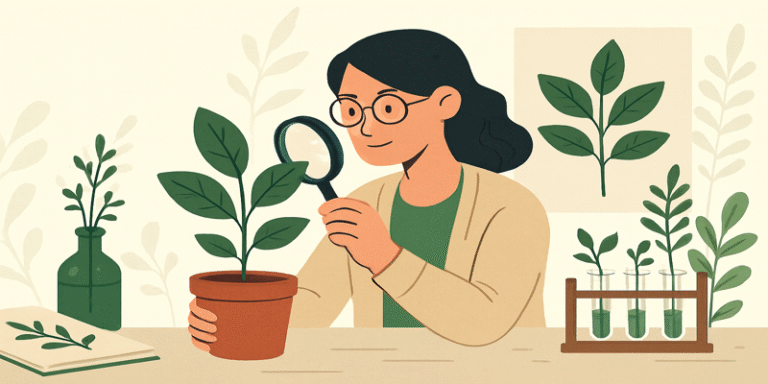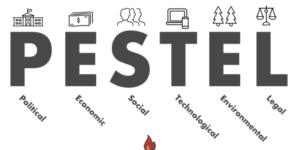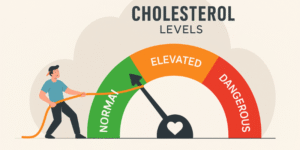Botany, the scientific study of plants, is one of the oldest branches of biology, with roots tracing back to ancient civilisations where plant knowledge was essential for food, medicine, and shelter. Today, botany integrates molecular biology, genetics, ecology, and environmental science to understand the structure, function, growth, and interactions of plants. As Raven et al. (2012) note, plants underpin life on Earth: they produce oxygen, form the base of food webs, and regulate global climate.
The study of botany is not just about identifying flowers or trees—it encompasses a range of scientific disciplines that address urgent challenges, such as food security, biodiversity loss, climate change, and the search for novel medicines.
1.0 Key Study Modules:
1.1 Plant Physiology
Plant physiology examines how plants function at the biochemical and cellular level, focusing on processes such as:
- Photosynthesis – the conversion of light energy into chemical energy stored as glucose.
- Respiration – the breakdown of glucose to release energy.
- Transpiration – the loss of water vapour through stomata, which drives nutrient transport.
- Hormonal regulation – control of growth and development by plant hormones such as auxins, gibberellins, and ethylene.
Understanding plant physiology helps in improving crop productivity, enhancing drought tolerance, and developing plants suited to changing climates (Taiz et al., 2015).
1.2 Plant Genetics and Molecular Biology
Plant genetics explores how traits are inherited and controlled at the molecular level. This includes:
- Mendelian genetics – inheritance of single-gene traits.
- Quantitative genetics – inheritance of traits controlled by multiple genes.
- Genomics – mapping and sequencing plant genomes.
- Genetic engineering – introducing beneficial traits, such as pest resistance or enhanced nutrition, into crops.
Modern advances, including CRISPR-Cas9 gene editing, have revolutionised the ability to improve plants quickly and precisely, with applications in agriculture and biofuel production (Chen et al., 2019).
1.3 Plant Ecology
Plant ecology investigates how plants interact with each other, animals, and their physical environment. Key areas include:
- Community ecology – how plant species assemble and coexist.
- Ecosystem ecology – the role of plants in nutrient cycling and energy flow.
- Climate change impacts – understanding plant responses to rising temperatures, shifting rainfall patterns, and increased CO₂.
Plant ecologists play a crucial role in habitat restoration, invasive species management, and conservation planning.
1.4 Plant Taxonomy and Systematics
Plant taxonomy is the classification and naming of plants, while systematics explores their evolutionary relationships. Taxonomists use morphological features, molecular markers, and phylogenetic analyses to categorise plant diversity. This knowledge is vital for:
- Conserving endangered species.
- Discovering plants with medicinal or agricultural potential.
- Tracking the spread of invasive species.
1.5 Economic Botany and Ethnobotany
Economic botany examines the commercial uses of plants, including food crops, timber, fibres, and medicinal plants. Ethnobotany focuses on the relationships between plants and human cultures, particularly traditional knowledge of plant-based remedies. Many pharmaceuticals—such as aspirin (from willow bark) and quinine (from cinchona bark)—originate from ethnobotanical studies (Balick and Cox, 2021).
1.6 Plant Pathology
Plant pathology studies plant diseases caused by fungi, bacteria, viruses, and environmental stress. Pathologists work to:
- Diagnose plant diseases.
- Develop resistant crop varieties.
- Implement integrated pest management strategies.
Given the economic losses caused by plant pathogens, this field is essential for global food security.
1.7 Palynology
Palynology is the study of pollen and spores. In botany, it is used to:
- Investigate plant reproduction.
- Trace plant evolutionary history.
- Reconstruct past climates through fossilised pollen records.
Palynology also has applications in forensic science and allergy research.
1.8 Applied Botany in Human Health and Sustainability
Botany contributes directly to human health through:
- Pharmacognosy – the study of medicinal drugs derived from plants.
- Nutritional science – improving the vitamin and mineral content of staple crops.
- Environmental health – using plants to filter pollutants (phytoremediation).
It also plays a role in sustainable development by advancing urban greening, reforestation, and agroforestry.
2.0 Key Challenges in Modern Botany
Despite its importance, botany faces challenges:
- Loss of biodiversity – rapid habitat destruction threatens plant species.
- Climate change – altering plant distributions and productivity.
- Decline in botanical education – fewer students are specialising in plant sciences, risking knowledge gaps in future conservation efforts.
3.0 The Future of Botany
The future of botany lies in interdisciplinary research. Combining remote sensing, bioinformatics, and synthetic biology will allow scientists to monitor plant health globally, design climate-resilient crops, and engineer plants for specific ecological functions. Citizen science and digital plant identification tools are also making botany more accessible.
Botany is a diverse and vital field within the life sciences. Its study modules—ranging from physiology and genetics to taxonomy and ecology—equip scientists with the knowledge to tackle pressing issues in agriculture, health, and conservation. As Raven et al. (2012) highlight, understanding plants is fundamental not only to sustaining human life but also to maintaining the planet’s ecosystems.
With the growing threats of climate change and biodiversity loss, investment in botanical research and education is more important than ever. Future botanists will be at the forefront of creating a sustainable relationship between people and the plant world.
References
Balick, M.J. and Cox, P.A., 2021. Plants, People, and Culture: The Science of Ethnobotany. 2nd ed. Boca Raton: CRC Press.
Chen, K., Wang, Y., Zhang, R., Zhang, H. and Gao, C., 2019. CRISPR/Cas genome editing and precision plant breeding in agriculture. Annual Review of Plant Biology, 70, pp.667–697.
Raven, P.H., Evert, R.F. and Eichhorn, S.E., 2012. Biology of Plants. 8th ed. New York: W.H. Freeman and Company.
Taiz, L., Zeiger, E., Møller, I.M. and Murphy, A., 2015. Plant Physiology and Development. 6th ed. Sunderland, MA: Sinauer Associates.









